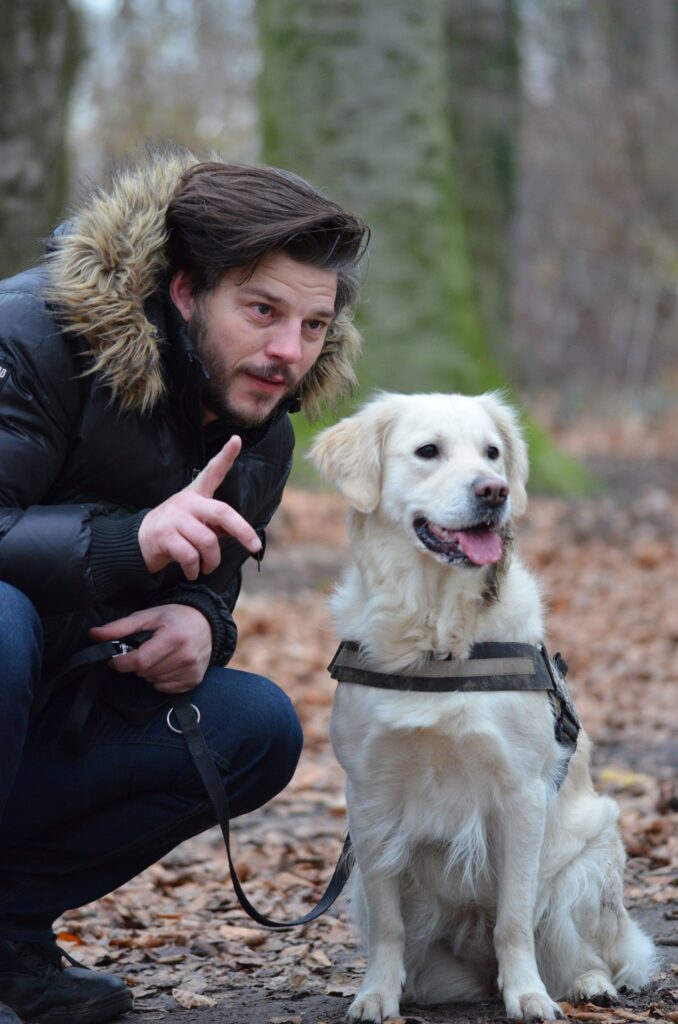 Why Doesn’t My Dog Listen To Me?
Why Doesn’t My Dog Listen To Me?
As a dog lover and owner, I understand the frustration of not getting your furry friend to listen to you. However, it’s important to remember that dogs are intelligent with unique personalities and learning styles. Effective dog training requires patience, consistency, and positive reinforcement.
Establish Yourself as the Alpha
Before you train your dog to listen to you, you must establish yourself as the pack leader. Dogs are pack animals, and they instinctively follow the alpha dog. When you assume the alpha role you gain your dog’s respect and obedience.
To establish yourself as the alpha, always enter and exit doorways before your dog, eat before your dog, and make sure your dog moves out of your way instead of the other way around. It’s also important to set boundaries and rules for your dog, such as not allowing them to sleep on your bed or eat human food. By establishing clear boundaries and consistently enforcing them, your dog will understand that you are in charge and will be more likely to listen to your commands.
Teach Your Dog Common Commands
Once you’ve established yourself as the alpha, it’s time to start training your dog. The first step is to teach the basic commands, such as “sit,” “stay,” “come,” and “heel.” These commands are essential for ensuring your dog’s safety and well-being.
Teach your dog these commands using positive reinforcement techniques such as treats, praise, and affection. Start by holding a treat above your dog’s nose and slowly moving it back over their head. As your dog’s head follows the treat, their rear end will naturally lower to the ground. As soon as their bottom touches the floor, say “sit” and give them the treat. Repeat this process several times daily until your dog can sit on command.
Similarly, for the “come” command, start by calling your dog’s name and rewarding them with a treat when they come to you. Gradually increase the distance between you and your dog until they can come to you from across the room or yard.
Be Patient and Consistent
Effective dog training requires patience and consistency. Dogs learn best through repetition and positive reinforcement. It’s important to set aside time each day to work on training your dog, even if it’s just for a few minutes at a time.
When training your dog, always use consistent commands and reward them immediately when they obey. Never punish your dog for not understanding a command. Doing this this can cause confusion and anxiety. Instead, be patient and continue to reinforce the desired behavior with positive reinforcement.
Wrap Up
Effective dog training requires patience, consistency, and positive reinforcement. By establishing yourself as the alpha, teaching your dog basic commands, and being patient and consistent in your training, you can ensure that your furry friend listens to you and behaves appropriately. Remember to always use positive reinforcement techniques and to be patient with your dog as they learn and grow. With time, and effort, you can create a strong bond with your dog and enjoy a happy and well-behaved companion. Learn how to bond with your Dog with this free mini course.
DISCLAIMER:
We use affiliate links and pay-per-action advertising. When you use these links to buy something we may earn a commission. Thank you for visiting and for your support.
PetsWebPages.com may contain copyrighted material. This use may not have been specifically authorized by the copyright owner. The material contained in this website is distributed for informational and educational purposes. Small portions of the original work may have been used but those portions could not easily be used to duplicate the original work. This usage constitutes ‘fair use’ of any such copyrighted material (referenced and provided for in section 107 of the US Copyright Law).
All trademarks displayed here are the property of their owners and are neither an endorsement nor a recommendation for or from those organizations. With the exception of affiliate links, linking to the websites of third-party organizations is not intended to imply we recommend those organizations or that the organizations endorse or have any affiliation with PetsWebPages.com.





